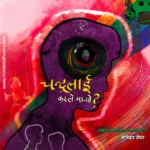An actor and director, Rajesh Singh serves as the repertory chief of the National School of Drama (NSD), New Delhi. Singh’s play, ‘Blackboard Land’, was showcased at the Nepal International Theatre Festival. Singh, who is well-known for his experimentation in theatre techniques and design, spoke with Kathmandu-based theatre artist and NSD graduate Bimal Subedi on themes of war, religion, and minorities.
How was your experience performing ‘Blackboard Land’ in Kathmandu?
Initially, I was not sure how the people in Nepal would relate to the content of the play. However, after receiving positive feedback on our twin performances, I am convinced we presented a universal issue. Around the world, war is operating not only through weapons; instead, it is rooted in areas of gender, caste, class, life struggles, and so on. Nepali audiences received these layers well.
A character in your play says, “The reason for war is not religion; instead, it is power and money.” Why?
Though a subjective ideology, religion is a unique approach to believing in community-based power. In normal circumstances, it is not harmful. But when we use it for a particular purpose, we are misusing it. As soon as the power game infiltrates the religion, it causes a power struggle. If you see the background of many wars happening all over the world, you will find religion upfront. Still, the hidden agenda is to gain control over human and natural resources and generate money.
Your play depicts violence in a local setting, but it seems to resonate here too.
Violence is a hidden game, and the whole world is running around that game. Despite human progress over the centuries, violence continues unabated in much of the world. We are turning crueller against each other, and violence has taken us to a territory where no country’s border seems to be peaceful. I think we should talk more about this.
What could be our role as artists and citizens in such a situation?
We need to recognise the power game and be mindful not to overcross their personal religious beliefs to the level of communal violence. It is not easy, but to get over this situation, we must deal with the hard ways. All of us should understand that hurting others’ beliefs and sentiments is not part of our lives, and it never should be.
Your play deals with minorities. How do you see the condition of minorities in South Asia?
Let me begin with the Indian context. After India’s independence, the slogan ‘eliminate poverty’ became a household name, but sadly, after 75 years, it is still relevant. Despite growing economically, we are still struggling at the social level. The gap between rich and poor and majority and minority remains stark. Poor and backward people are targeted intentionally because their rise would make their absolute power of will vulnerable. This is more or less the case in many countries of the world.
In the play, design and light are used to define space and text. Many artists think theatre is about acting onstage just to amuse the audience. What do you have to say?
Space, story and actors are the essential elements of a play, but we often forget to define the space. Space here not only means the stage but also signifies the environment of the content you present through an actor. Drama is a visual art form consisting of actors, lights, props, costumes, and sets. Expressing through words is the easiest part and a typical pattern, but many things can’t be said in words. Just like poetry doesn’t only talk about words, visuals present the craft more powerfully than text. If the stage gets visual assistance, the content gets a needed boost, making the play distinct. A proper understanding of the space breaks the monotony of the theatre experience and saves dramas from being a clown.
At the National School of Drama in New Delhi, where you work, many experienced professors have retired or are retiring, but there seems to be little effort to find their replacement. As the repertory chief of the NSD, what do you have to say?
Teachers are not made in a moment. Developing teachers takes a long journey. The NSD needed to catch up and keep this promise and responsibility intact. It should have been a smooth transition, allowing teachers the needed handover time. But sadly, that didn’t happen.
I have seen the works of the NSD, where both traditional and postmodern approaches to theatre exist. What contribution do you wish to make to keep these things moving?
An institution must cover every form and genre of work. Audiences love a particular work according to their interest and level of understanding and should get a buffet of forms. For instance, you can see the film industry where every kind of film exists—commercial, art, action, romance, and so on. As an institution, your job is to ensure the content is decent while also maintaining the overall value of that production. That will be my goal as the head of the repertory. When I travel to India as a repertory chief, I find all kinds of audiences, and hence, I believe we should keep drama for these kinds of audiences, too.







